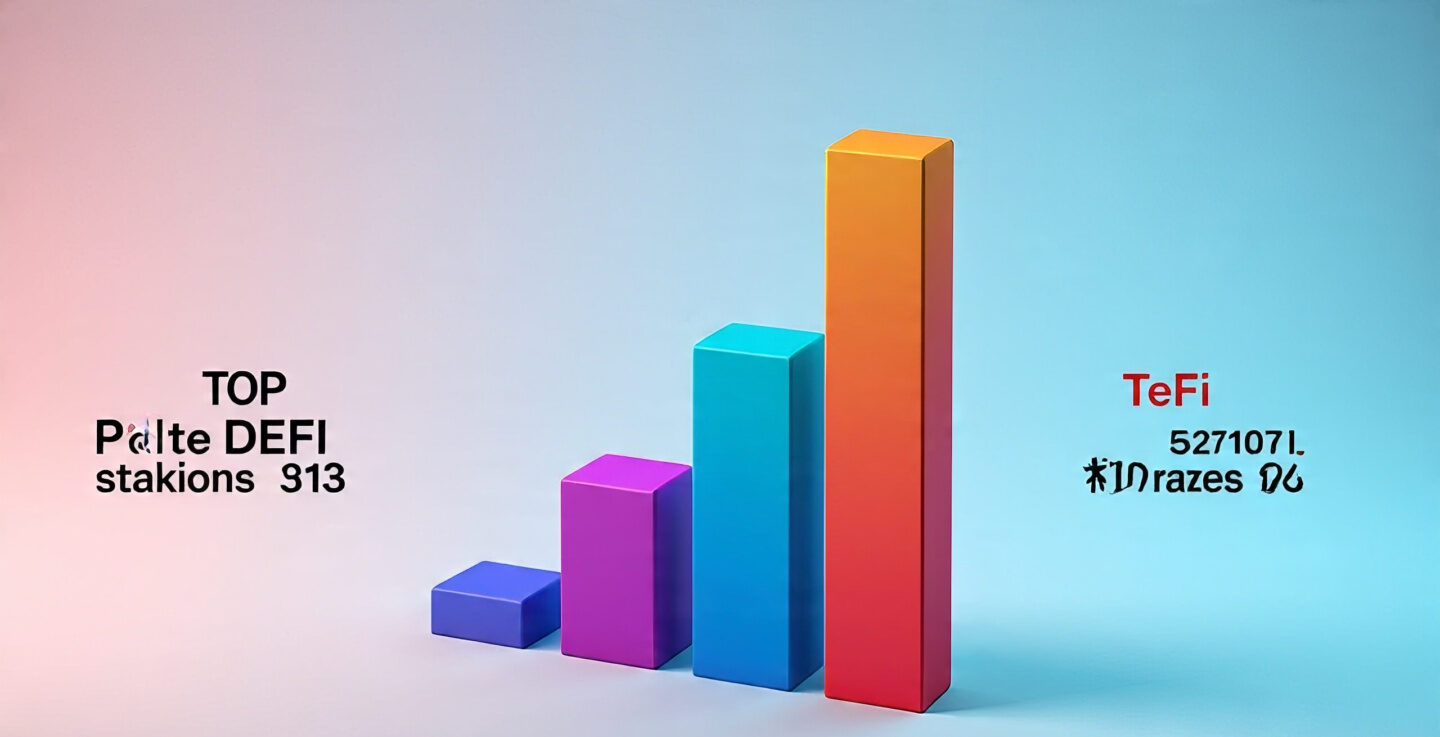The world of decentralized finance has revolutionized how investors earn passive income from their cryptocurrency holdings. When searching for the best opportunities, conducting a thorough DeFi staking rewards comparison becomes essential for maximizing your returns while managing risk effectively. With hundreds of protocols offering various staking mechanisms, understanding which platforms deliver the highest yields with acceptable security levels can make the difference between mediocre and exceptional portfolio performance.
This comprehensive guide will walk you through the top DeFi staking protocols, compare their reward structures, and help you make informed decisions about where to stake your digital assets. Whether you’re a seasoned DeFi veteran or just starting your journey into decentralized finance, this analysis will provide the insights needed to optimize your staking strategy.
DeFi Staking Fundamentals
Before diving into our detailed comparison, it’s crucial to understand what DeFi staking entails and how it differs from traditional cryptocurrency staking. DeFi staking involves locking up your tokens in smart contracts to earn rewards, typically in the form of additional tokens or fees generated by the protocol.
Unlike proof-of-stake consensus mechanisms, DeFi staking rewards come from various sources including trading fees, lending interest, governance token distributions, and protocol revenue sharing. The decentralized nature of these protocols means yields can fluctuate based on market conditions, user activity, and tokenomics.
The key factors that influence staking rewards include:
- Total Value Locked (TVL) in the protocol
- Token emission schedules and inflation rates
- Protocol revenue and fee distribution mechanisms
- Market demand for the underlying tokens
- Governance decisions affecting reward structures
Understanding these fundamentals helps investors make more informed decisions when comparing different staking opportunities across the DeFi ecosystem.
Top DeFi Staking Rewards Comparison by Protocol Category
Liquid Staking Protocols
Liquid staking has emerged as one of the most popular DeFi innovations, allowing users to stake their assets while maintaining liquidity through derivative tokens. This category has seen explosive growth due to its flexibility and capital efficiency.
Lido Finance leads the liquid staking sector with over $30 billion in total value locked. Users can stake ETH and receive stETH tokens that accrue staking rewards while remaining tradeable. Current APY ranges from 3-5% depending on Ethereum network conditions. The protocol distributes rewards daily and charges a 10% fee on staking rewards.
Rocket Pool offers a more decentralized alternative to Lido, featuring a network of node operators rather than a centralized validator set. The protocol provides rETH tokens to stakers with similar yield characteristics but enhanced decentralization. APY typically ranges from 2.5-4.5% with a slightly higher fee structure to compensate node operators.
Frax Ether (frxETH) combines liquid staking with additional DeFi strategies to boost yields. Users can choose between holding frxETH for basic staking rewards or depositing into Frax’s vault system for enhanced returns reaching 6-8% APY through leveraged strategies.
Yield Farming Protocols
Traditional yield farming remains a cornerstone of DeFi staking, offering rewards for providing liquidity to automated market makers and lending protocols.
Uniswap V3 provides concentrated liquidity rewards for liquidity providers. While not traditional staking, LP positions can generate substantial fees, especially in volatile pairs. Returns vary widely from 5% to over 100% APY depending on the trading pair, fee tier, and market conditions.
Aave offers staking rewards through its Safety Module, where users stake AAVE tokens to earn protocol fees and additional AAVE rewards. The current APY hovers around 5-7% but includes slashing risk if the protocol faces a shortfall event.
Compound provides COMP token rewards to users who supply assets to the lending protocol. While yields have decreased from DeFi summer highs, the protocol still offers competitive rates of 2-6% APY across different asset pools.

Governance Token Staking
Many DeFi protocols offer enhanced rewards for users who stake native governance tokens, aligning incentives between token holders and protocol success.
Curve Finance incentivizes long-term token holding through its vote-escrowed CRV (veCRV) mechanism. Users who lock CRV tokens for extended periods can earn up to 2.5x boost on their liquidity provision rewards, with total APY reaching 15-40% on popular pools.
Balancer operates a similar veBAL system where locked tokens provide voting rights and enhanced rewards. The protocol’s 80/20 BAL/ETH pool often yields 20-30% APY when considering both trading fees and BAL emissions.
Synthetix requires SNX staking to mint synthetic assets, with stakers earning fees from the Synthetix exchange. Despite higher complexity and risk, SNX staking can provide 15-25% APY during periods of high trading volume.
Risk Assessment in DeFi Staking Protocols
Smart Contract Risks
Every DeFi staking opportunity carries inherent smart contract risk. Even audited protocols can contain vulnerabilities that malicious actors might exploit. Recent high-profile exploits have resulted in hundreds of millions in losses, making due diligence essential.
When evaluating protocols, consider the audit history, time since deployment, total value locked as a security indicator, and the reputation of the development team. Established protocols like Aave and Compound have battle-tested smart contracts but may offer lower yields compared to newer, riskier alternatives.
Insurance options through protocols like Nexus Mutual or traditional insurance providers can help mitigate smart contract risks, though coverage typically comes at a cost that reduces net yields.
Impermanent Loss and Liquidity Risks
Liquidity provision strategies often expose users to impermanent loss risk, where the value of deposited tokens changes relative to simply holding them. This risk is particularly relevant for volatile token pairs and can sometimes exceed earned rewards.
Protocols offering single-sided staking eliminate impermanent loss but may provide lower rewards. Understanding the risk-reward tradeoff helps investors choose appropriate strategies based on their risk tolerance and market outlook.
Protocol and Governance Risks
Decentralized governance introduces unique risks as token holders can vote to change protocol parameters, fee structures, or even upgrade smart contracts. While governance provides protocol evolution, malicious proposals or governance attacks can negatively impact stakers.
Consider the governance token distribution, voting participation rates, and historical governance decisions when evaluating long-term staking strategies. Protocols with concentrated token ownership or low participation rates face higher governance risks.
Maximizing Your DeFi Staking Strategy
Portfolio Diversification Approaches
Successful DeFi staking requires diversification across protocols, asset types, and risk levels. A balanced approach might include:
- Blue-chip protocols (30-50% allocation) for stable, lower-risk returns
- Mid-tier protocols (25-35% allocation) for moderate risk and higher potential yields
- Experimental protocols (10-20% allocation) for maximum yield hunting with higher risk tolerance
This diversification helps smooth out volatility while capturing opportunities across the DeFi ecosystem. Regular rebalancing ensures your portfolio remains aligned with changing market conditions and personal risk preferences.
Timing and Market Cycle Considerations
DeFi staking rewards follow cyclical patterns related to market conditions, protocol adoption, and token emissions. Understanding these cycles helps optimize entry and exit timing.
Bull markets typically see higher staking rewards due to increased trading volume and protocol usage, while bear markets may offer better token accumulation opportunities at lower prices. Emissions-based rewards often decline over time as protocols mature, making early participation more lucrative.
Tax Optimization Strategies
DeFi staking generates taxable events in most jurisdictions, making tax planning essential for maximizing after-tax returns. Key considerations include:
- Reward timing and whether to claim frequently or compound
- Token holding periods for capital gains treatment
- Loss harvesting opportunities to offset gains
- Entity structure for high-volume staking operations
Consult with tax professionals familiar with cryptocurrency taxation to ensure compliance while optimizing your staking strategy’s tax efficiency.
Advanced DeFi Staking Techniques
Leveraged Staking Strategies
Advanced users can amplify returns through leveraged staking techniques, though these strategies significantly increase risk. Popular approaches include:
Recursive staking involves borrowing against staked assets to acquire more tokens for staking, creating a leveraged position. While this can multiply returns, it also amplifies losses and introduces liquidation risk.
Delta-neutral strategies combine staking with derivatives positions to eliminate price risk while capturing staking yields. These strategies require sophisticated risk management but can provide consistent returns regardless of market direction.
Cross-Chain Staking Opportunities
Multi-chain DeFi has opened new staking opportunities across different blockchain networks. Each chain offers unique advantages:
Ethereum remains the largest DeFi ecosystem but faces high gas costs that can erode smaller position returns. Layer 2 solutions like Arbitrum and Optimism provide similar opportunities with lower transaction costs.
Binance Smart Chain offers lower fees but with different security assumptions and protocol maturity levels. Many familiar DeFi protocols have deployed on BSC with competitive staking rewards.
Polygon, Avalanche, and Solana each provide distinct DeFi ecosystems with their own staking opportunities and risk profiles. Cross-chain bridges enable capital movement but introduce additional technical risks.
Automated Staking and Yield Optimization
Yield optimization protocols like Yearn Finance, Beefy Finance, and Harvest automate the process of finding and capturing the best staking rewards. These protocols:
- Automatically compound staking rewards to maximize returns
- Switch between protocols to chase the highest yields
- Manage complex strategies that would be difficult for individual users
- Pool smaller amounts to access strategies with high minimum requirements
While convenient, these protocols add additional smart contract layers and typically charge management fees ranging from 2-20% of rewards.
Future of DeFi Staking Rewards

Emerging Trends and Innovations
The DeFi staking landscape continues evolving with new mechanisms and innovations:
Liquid staking derivatives are expanding beyond Ethereum to other proof-of-stake networks, providing liquidity while earning staking rewards across multiple chains.
Real-world asset (RWA) protocols are beginning to offer staking rewards backed by traditional financial instruments, potentially providing more stable returns.
MEV (Maximum Extractable Value) sharing protocols are emerging to distribute MEV profits to stakers, adding new reward sources beyond traditional mechanisms.
Regulatory Considerations
Increasing regulatory scrutiny may impact DeFi staking rewards structures and availability. Key developments to monitor include:
- Securities classification of staking rewards and governance tokens
- Tax treatment changes that could affect net returns
- Compliance requirements that may limit protocol access
- Traditional finance integration that could influence DeFi yields
Staying informed about regulatory developments helps investors adapt their staking strategies proactively rather than reactively.
Conclusion
Conducting a thorough DeFi staking rewards comparison requires balancing yield potential with risk management across an ever-evolving landscape of protocols and strategies. The highest APY doesn’t always translate to the best risk-adjusted returns, especially when considering factors like smart contract security, token price volatility, and tax implications.
Successful DeFi staking demands continuous education, portfolio diversification, and adaptation to changing market conditions. By understanding the fundamental differences between liquid staking, yield farming, and governance token staking, investors can construct strategies aligned with their risk tolerance and return objectives.
Read More: Best DeFi Portfolio Management Tools 2025 Track & Optimize

